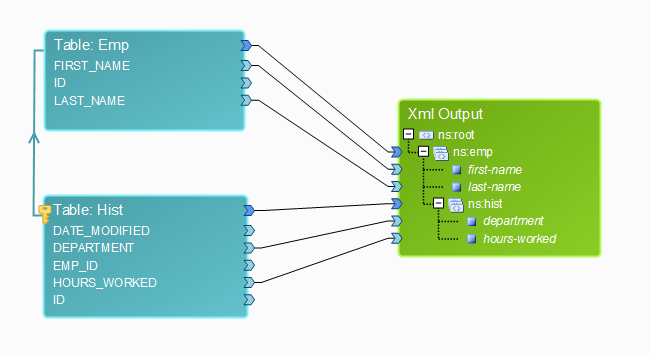|
XML Output |




|
The Xml Output diagram object represents the structure of the XML that will be generated.
The following example describes an XML output which contains a list of all the employees in a corporation. The root element, named ns:root, contains a sequence of elements named ns:emp with an attribute named id. Each ns:emp element contains a sequence of elements named ns:hist with the attributes hours-worked and department, which describe the history of the employee in the corporation.

Output View:
<?xml version="1.0" encoding="UTF-8" standalone="yes"?>
<ns:root xmlns:ns="http://www.tempuri.org/XML">
<ns:emp id="1">
<ns:hist hours-worked="300" department="Accounting"/>
<ns:hist hours-worked="500" department="Sales"/>
<ns:hist hours-worked="3000" department="Development"/>
<ns:hist hours-worked="100" department="Accounting"/>
</ns:emp>
<ns:emp id="2">
<ns:hist hours-worked="1000" department="Accounting"/>
<ns:hist hours-worked="8000" department="Sales"/>
<ns:hist hours-worked="5000" department="Development"/>
</ns:emp>
<ns:emp id="3"/>
</ns:root>